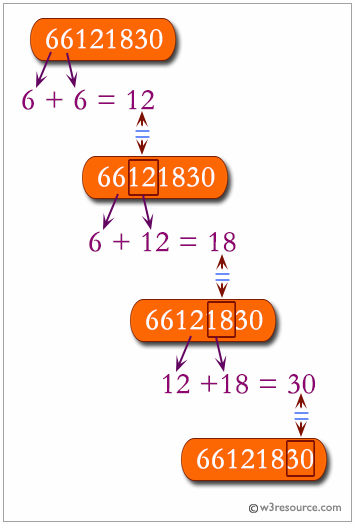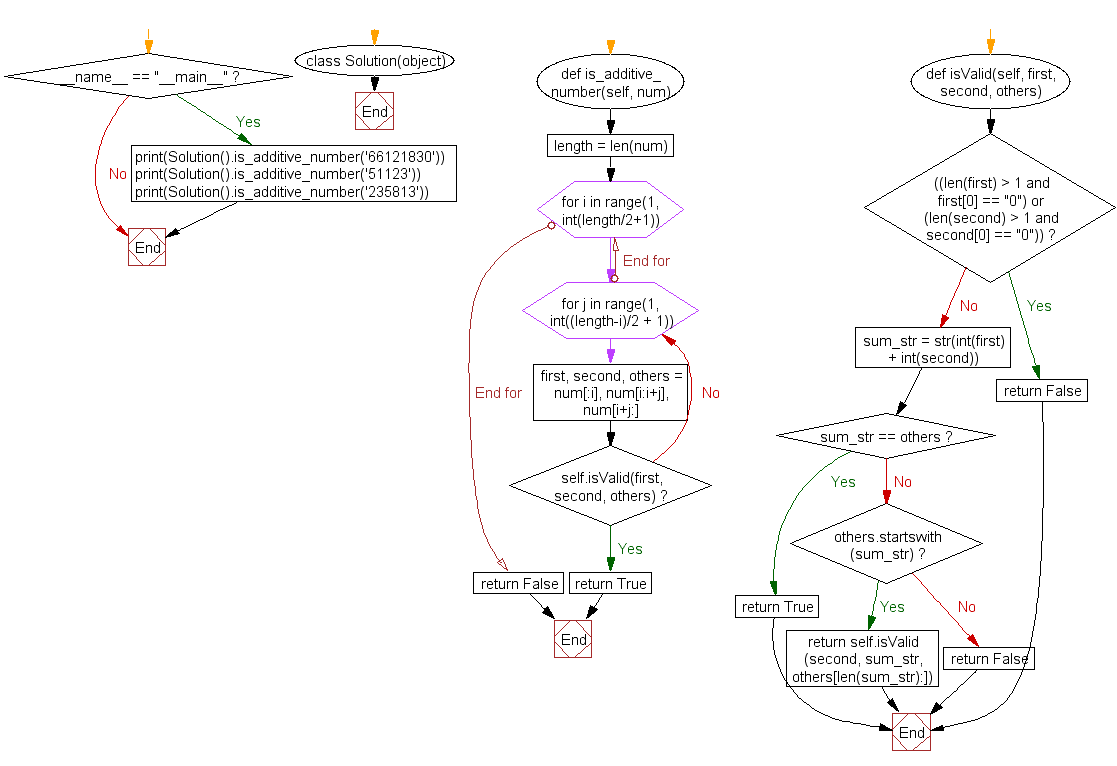Python Challenges: Find whether it contains an additive sequence or not
Write a Python program to find whether it contains an additive sequence or not.
The additive sequence is a sequence of numbers where the sum of the first two numbers is equal to the third one.
Note: Numbers in the additive sequence cannot have leading zeros.
Explanation:

Sample Solution:
Python Code:
class Solution(object):
# DFS: iterative implement.
def is_additive_number(self, num):
length = len(num)
for i in range(1, int(length/2+1)):
for j in range(1, int((length-i)/2 + 1)):
first, second, others = num[:i], num[i:i+j], num[i+j:]
if self.isValid(first, second, others):
return True
return False
def isValid(self, first, second, others):
if ((len(first) > 1 and first[0] == "0") or
(len(second) > 1 and second[0] == "0")):
return False
sum_str = str(int(first) + int(second))
if sum_str == others:
return True
elif others.startswith(sum_str):
return self.isValid(second, sum_str, others[len(sum_str):])
else:
return False
if __name__ == "__main__":
print(Solution().is_additive_number('66121830'))
print(Solution().is_additive_number('51123'))
print(Solution().is_additive_number('235813'))
Sample Output:
True False True
Flowchart:

Python Code Editor:
Contribute your code and comments through Disqus.
Previous: Write a Python program to add the digits of a positive integer repeatedly until the result has a single digit.
Next: Write a Python program to reverse the digits of an integer.
What is the difficulty level of this exercise?
Test your Programming skills with w3resource's quiz.
